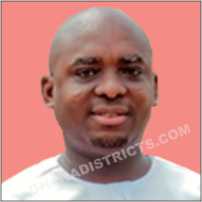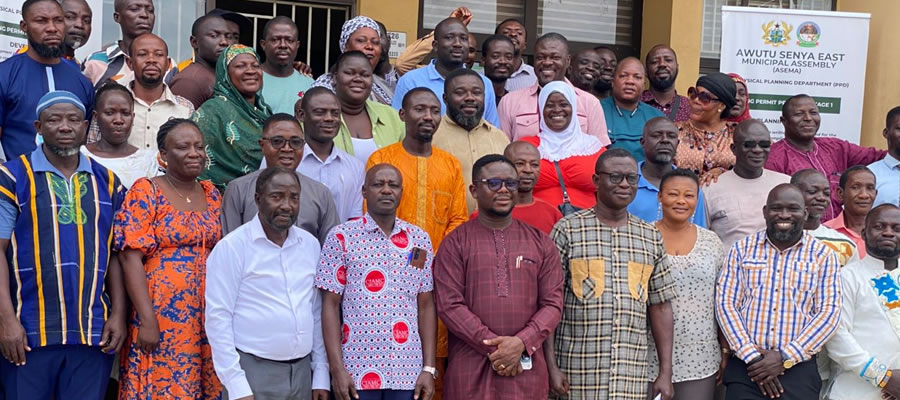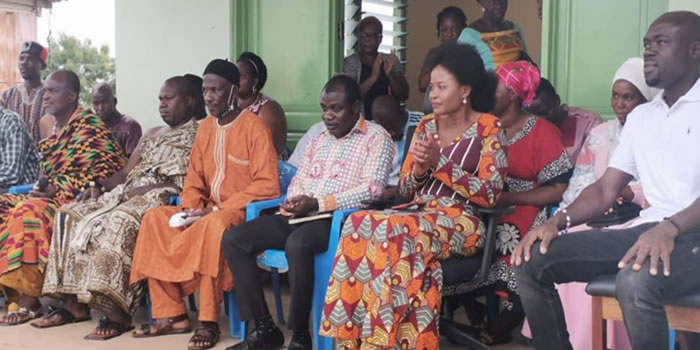

Economic Characteristics
Economically active and Inactive people Awutu Senya East Municipal is an area with a vibrant economy. Approximately 75.1% and 24.9% of the population aged 15-64 years are economically active and inactive, respectively. This depicts an economic dependency ratio of 33. This means that there are 33 persons in the economically inactive group for every 100 persons in the economically active group. However, this is lower compared to the regional figure (43), but slightly higher than the national of 30. Figure 4 presents the percentage of persons in the economically active and inactive population.
Figure 6: Economic Activity Status of Awutu Senya District
Source: Field Survey, November 2016
The low dependency ratio is likely to affect economic growth as persons in the economically active group have to spend less on the inactive population, thereby having the opportunity to save and invest to boost economy’s growth. If authorities however fail to keep the population at a human sustainable number and provide job opportunities for those in the economically active ages, there could be increased pressure placed on government finances, leading to higher borrowing or higher taxes (which could create disincentives to work and reduce disposable income) which in the long run affect the country’s economic growth.
Commerce
The service/commerce sector is dominated by females. The sector comprises banking, petty trading, telecommunication, hotel, and teaching activities, among others. A greater proportion of females (81%) are found in the service and sales sector than males (19%).
The industrial sector is also dominated by Mining and Quarrying, manufacturing, construction and real estate activities. The sector employs 45 and 55 percent of the males and females, respectively. The district has a much wider economic diversification to absorb the labor force for economic development. The potential entrepreneurial opportunities in the district are the availability of ready market, easy access to information, diversification of products and high customer demand for products.
The retail trade also employs a substantial number of the active population. About 16.0% of the active population are engaged in this sector, the District has some of its prominent markets in Senya and Bawjiase.
Other economic activities include Artisanal (mostly small scale metallurgical shops) and agro processing (Cassava dough, Gari and Corn dough and sugar cane). Others include mining and quarrying, manufacturing, construction, transportation, financial, and insurance.
Presently, the District is served by about nine (9) banks and other financial institutions. All of the banks are Rural Banks located in the major towns of the District such as Awutu Bereku, Senya, and Bawjiase.
Local Economic Development
Local Economic Development (LED) is a strategy or an approach to economic development in the developing world, as it name implies, for employment promotion through micro and small enterprise development, support of social dialogue and development planning (ILO, 2012). The promotion of Local Economic Development (LED) signals the drive for rooting employment creation by building on the comparative advantages and the unique characteristics of localities.
The Municipality has over 75 local economic-based enterprises for development. The enterprises include gari processing, soap making, beads making and fashion design enterprises. The activities of these local based economic enterprises are mainly gari processing, soap making, beads making and fashion design. The enterprises contribute largely to employment creation, revenue generation, food security and capacity building.
Table 6: LED in the District
Source: ASDA, BAC 2016
Poverty Situation
One way of visualizing the spatial distribution of poverty is through the number of poor individuals. Remote, rural, isolated areas may have high headcount rate but may have few poor persons due to their small population size. In contrast, poverty rate may be low in urban areas but they may be host to a large number of poor people.
Depth of poverty measures how much below the poverty line the poor’s standard of living is. The lower the depth of poverty, the closer the poor are to the poverty line, and vice versa. It is easier to achieve poverty reduction in areas with low depth of poverty
The Municipality is only second to the Ekumfi District in terms Poverty Incidence with 33.6% of its population considered poor. The figures below shows the incidence, number of poor persons, depth and inequality of poverty of the District in the Regional context. (Source: Ghana Poverty Mapping Report, GSS 2015).
Figure 8: Poverty incidence
Figure 9: Estimated number of poor persons
Figure 10: Poverty depth
Figure 11: Poverty inequality
Date Created : 10/24/2024 6:19:44 AM











 facebook
facebook
 twitter
twitter
 Youtube
Youtube
 +233 593 831 280
+233 593 831 280 0800 430 430
0800 430 430 GPS: GE-231-4383
GPS: GE-231-4383 info@ghanadistricts.com
info@ghanadistricts.com Box GP1044, Accra, Ghana
Box GP1044, Accra, Ghana